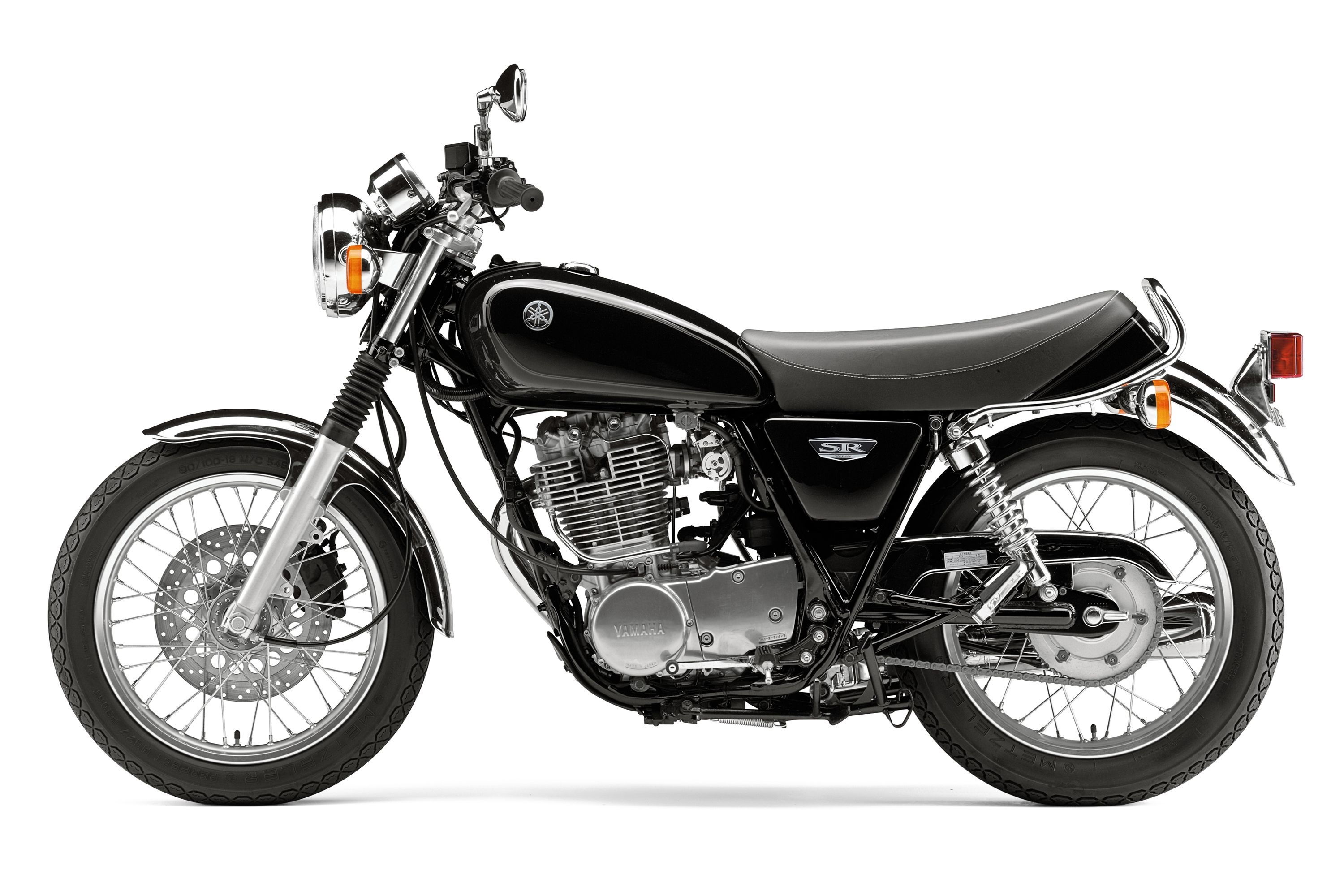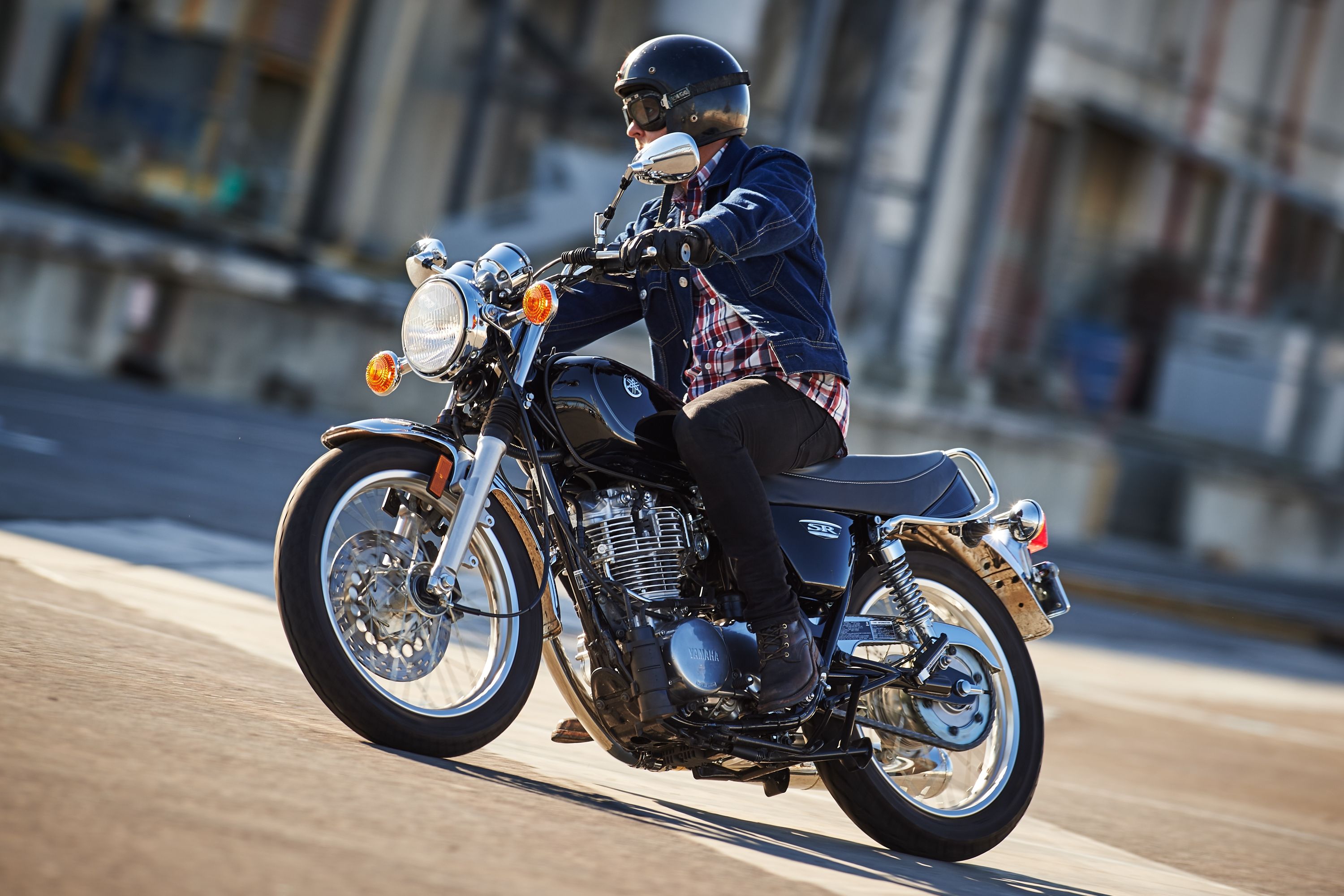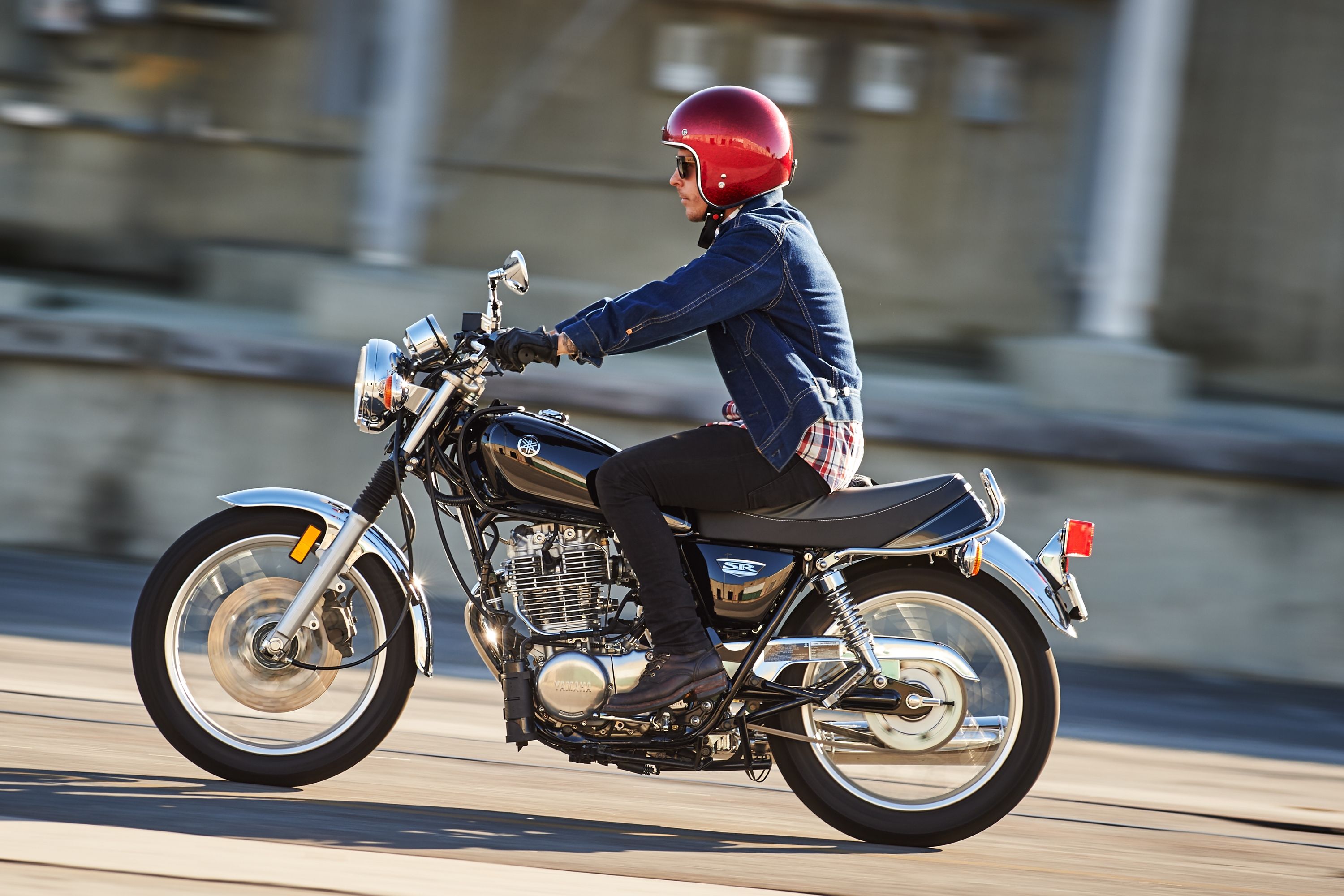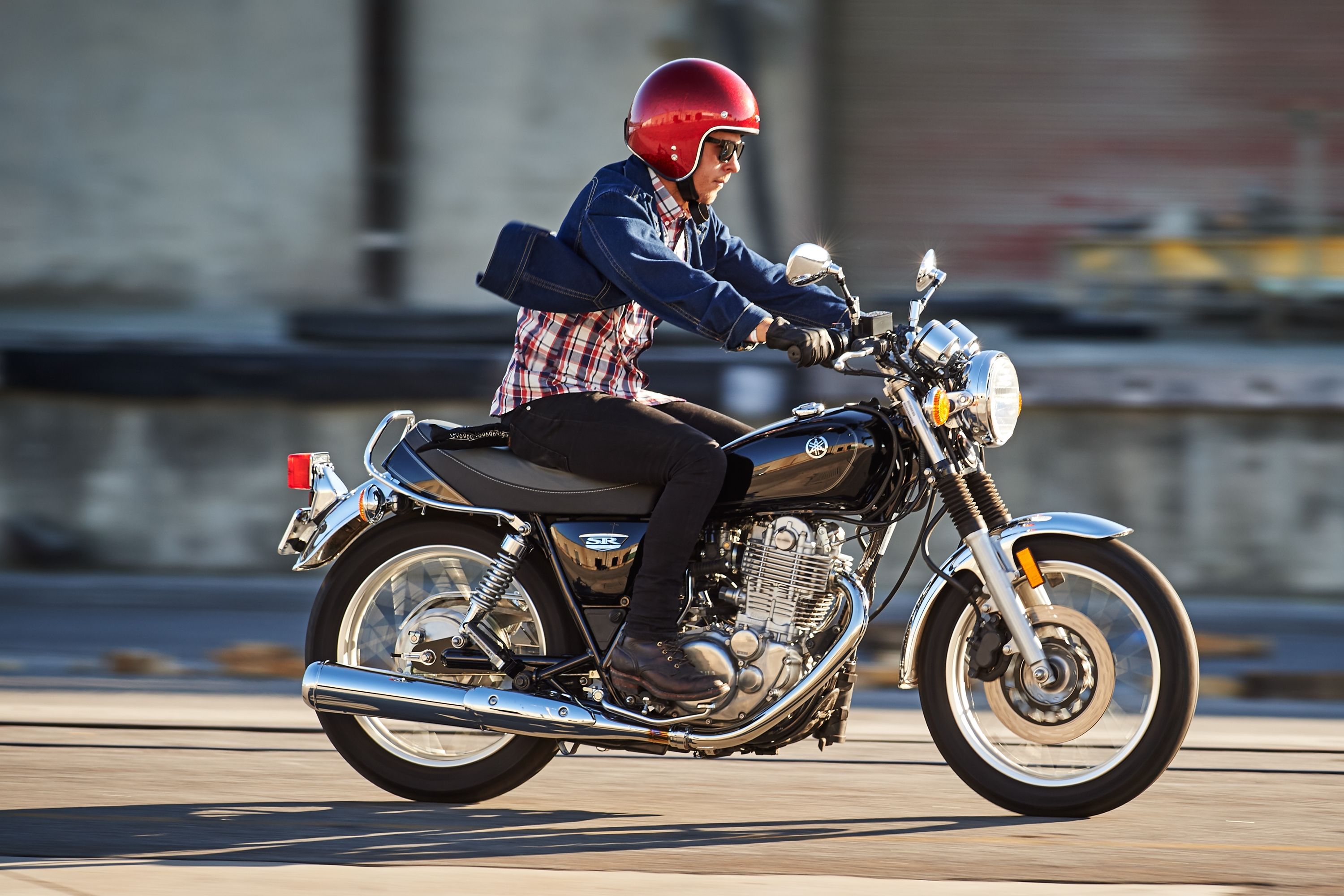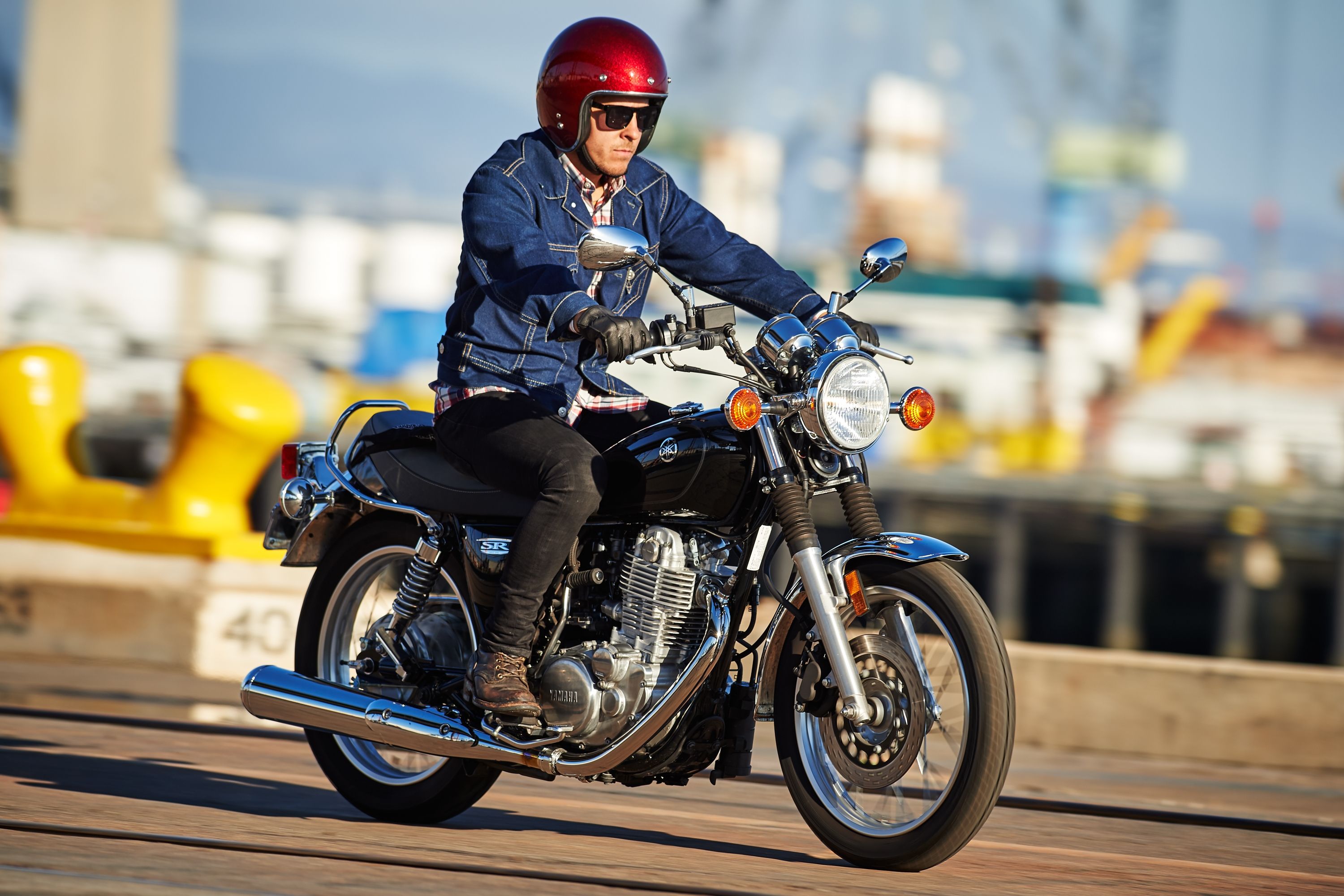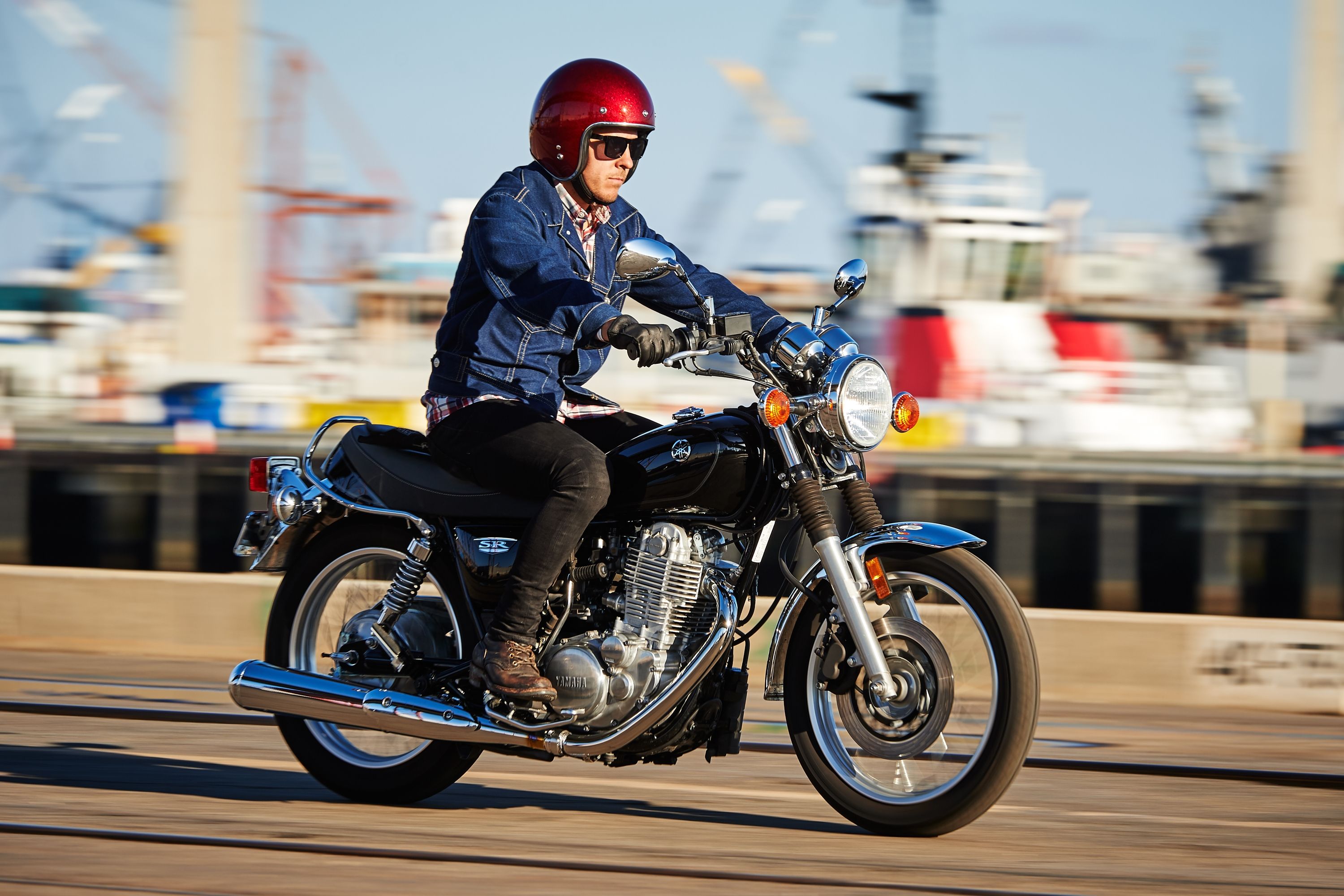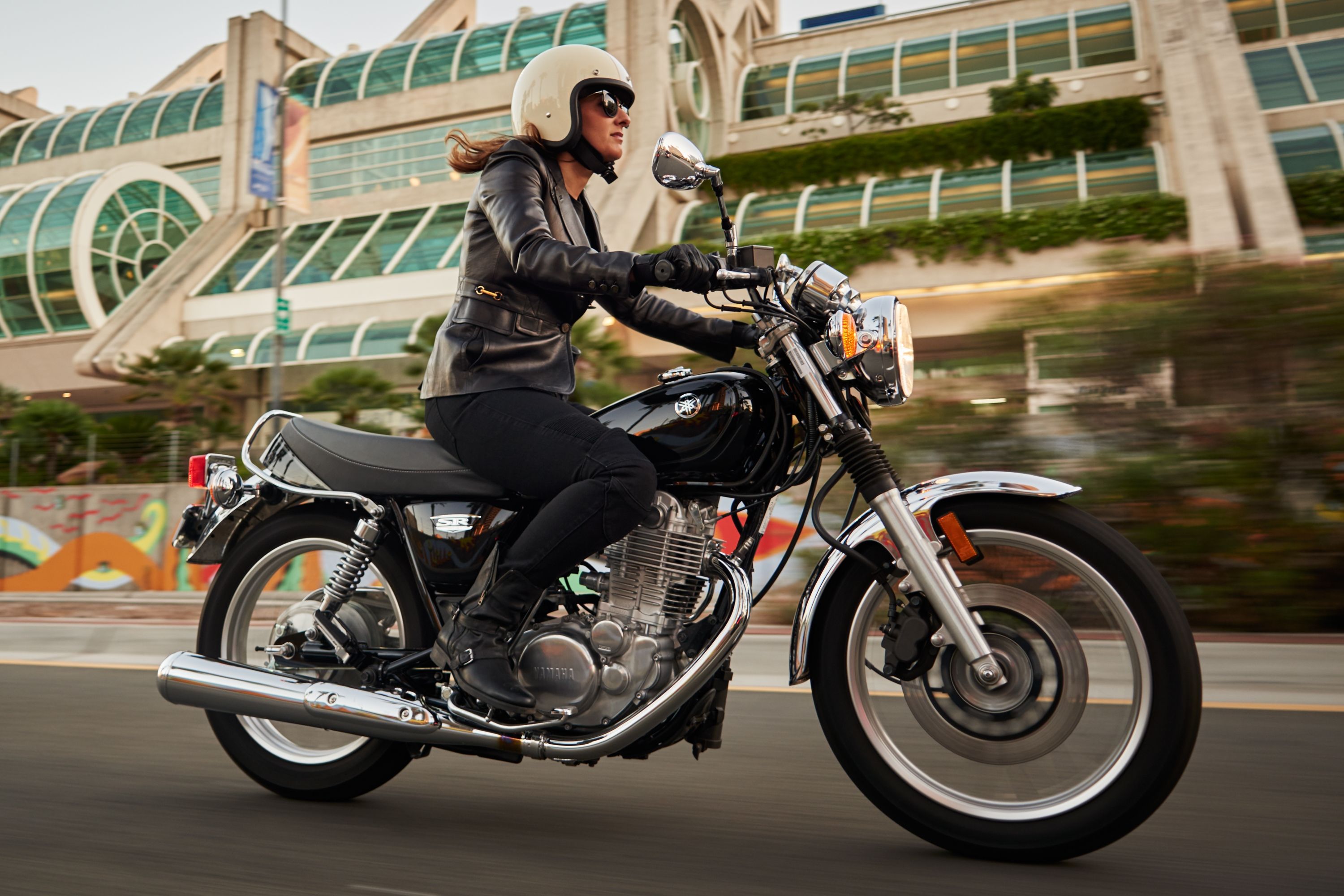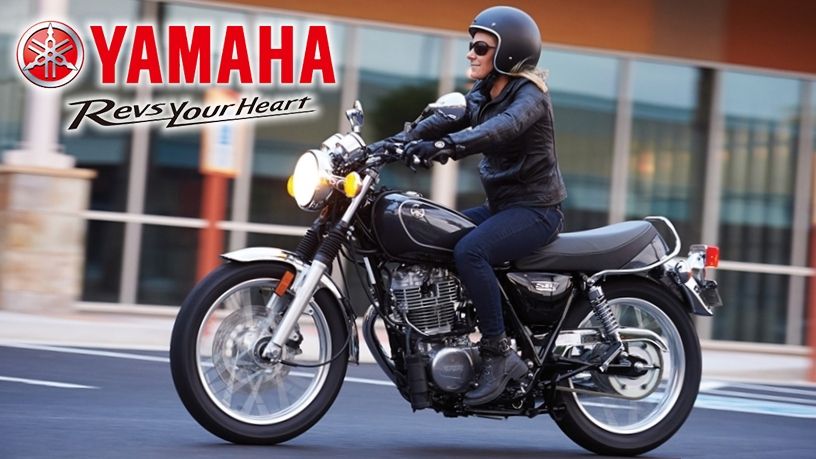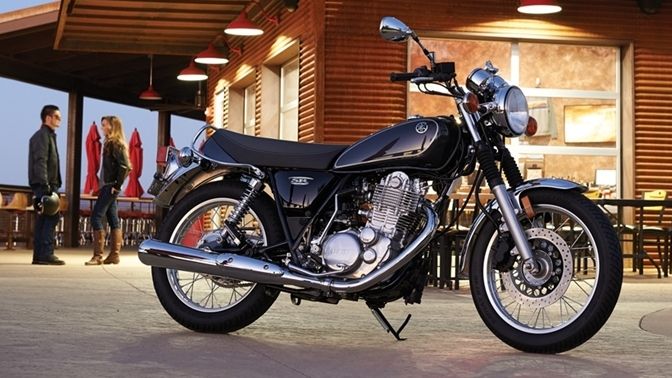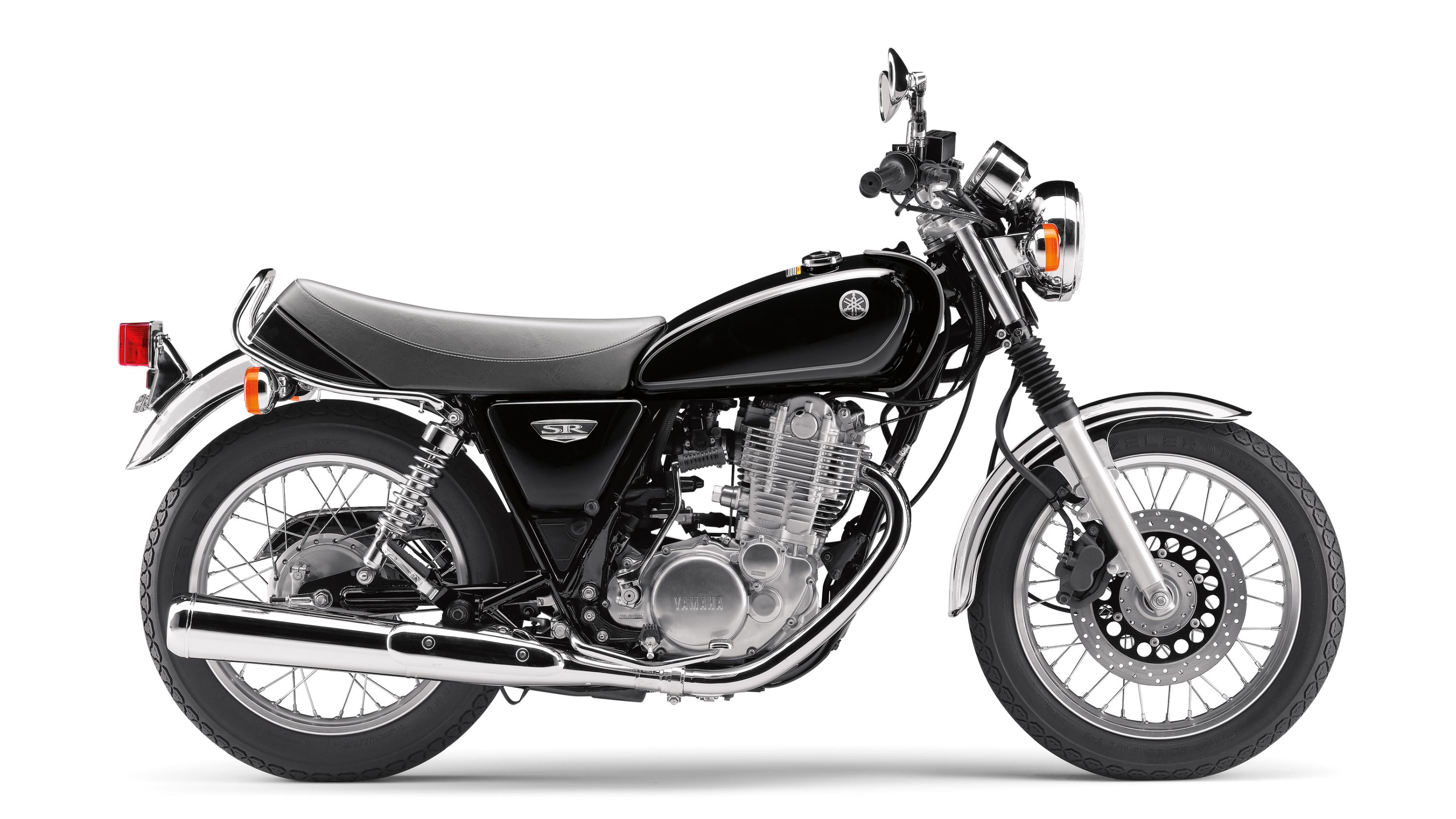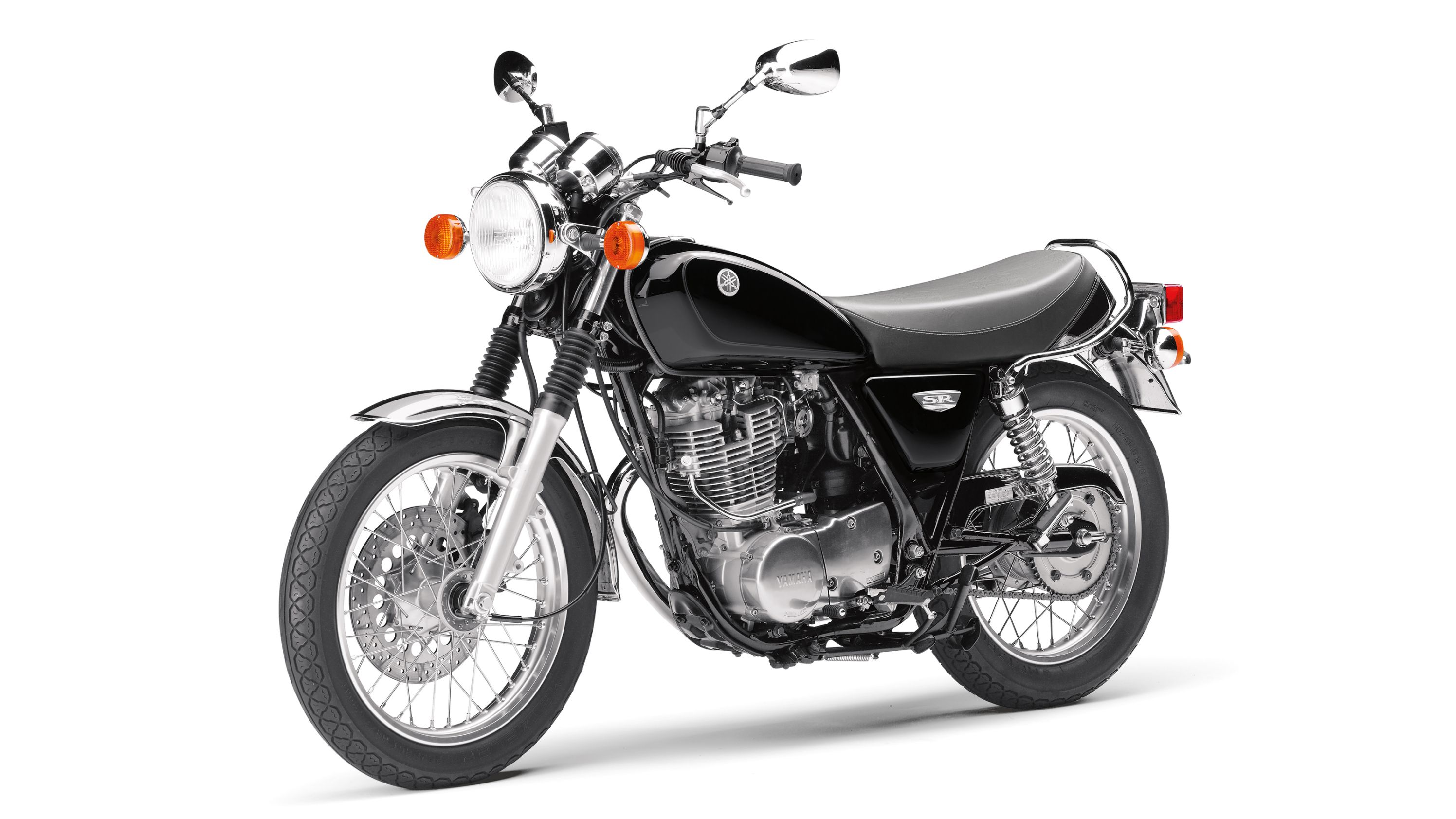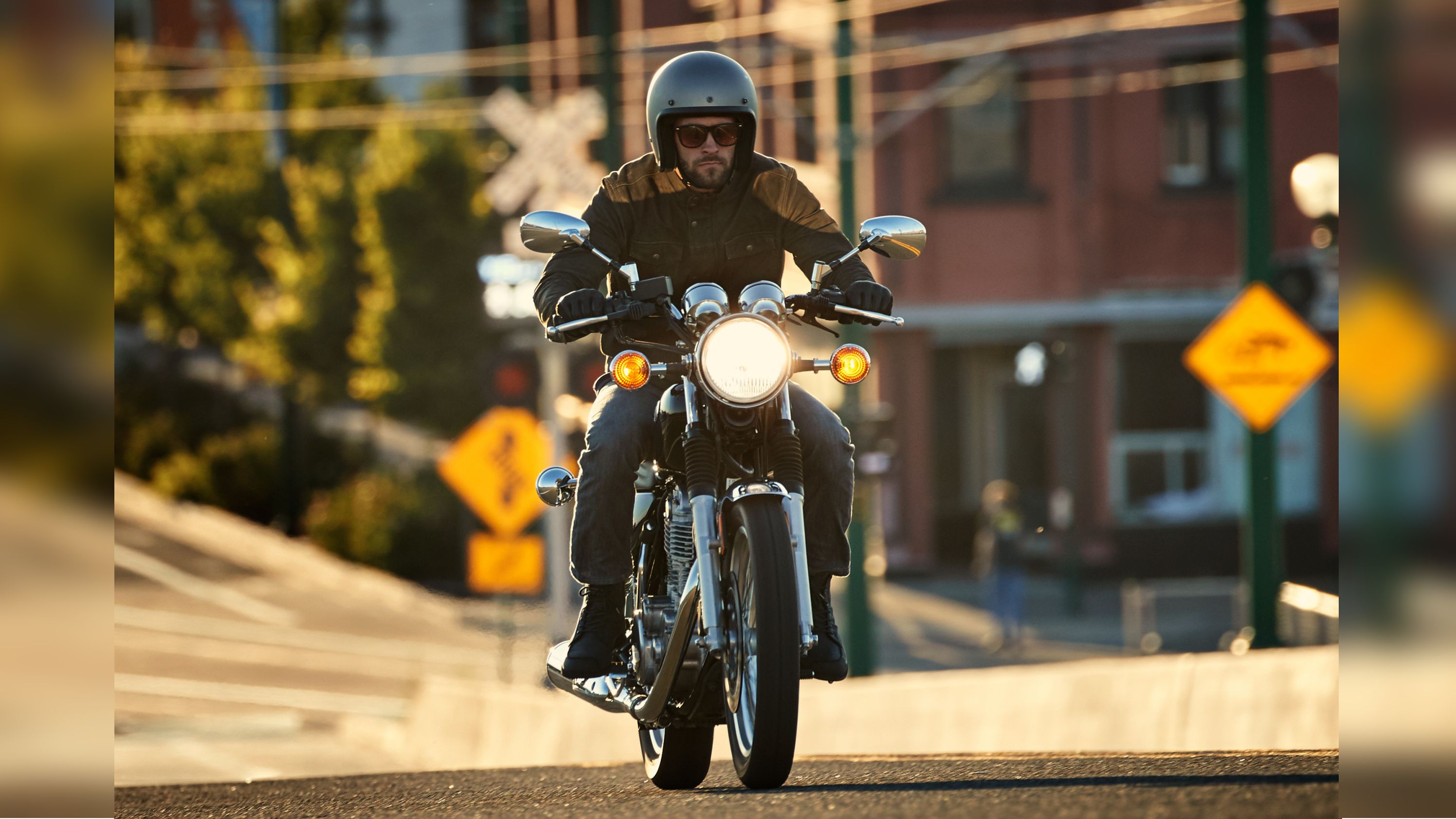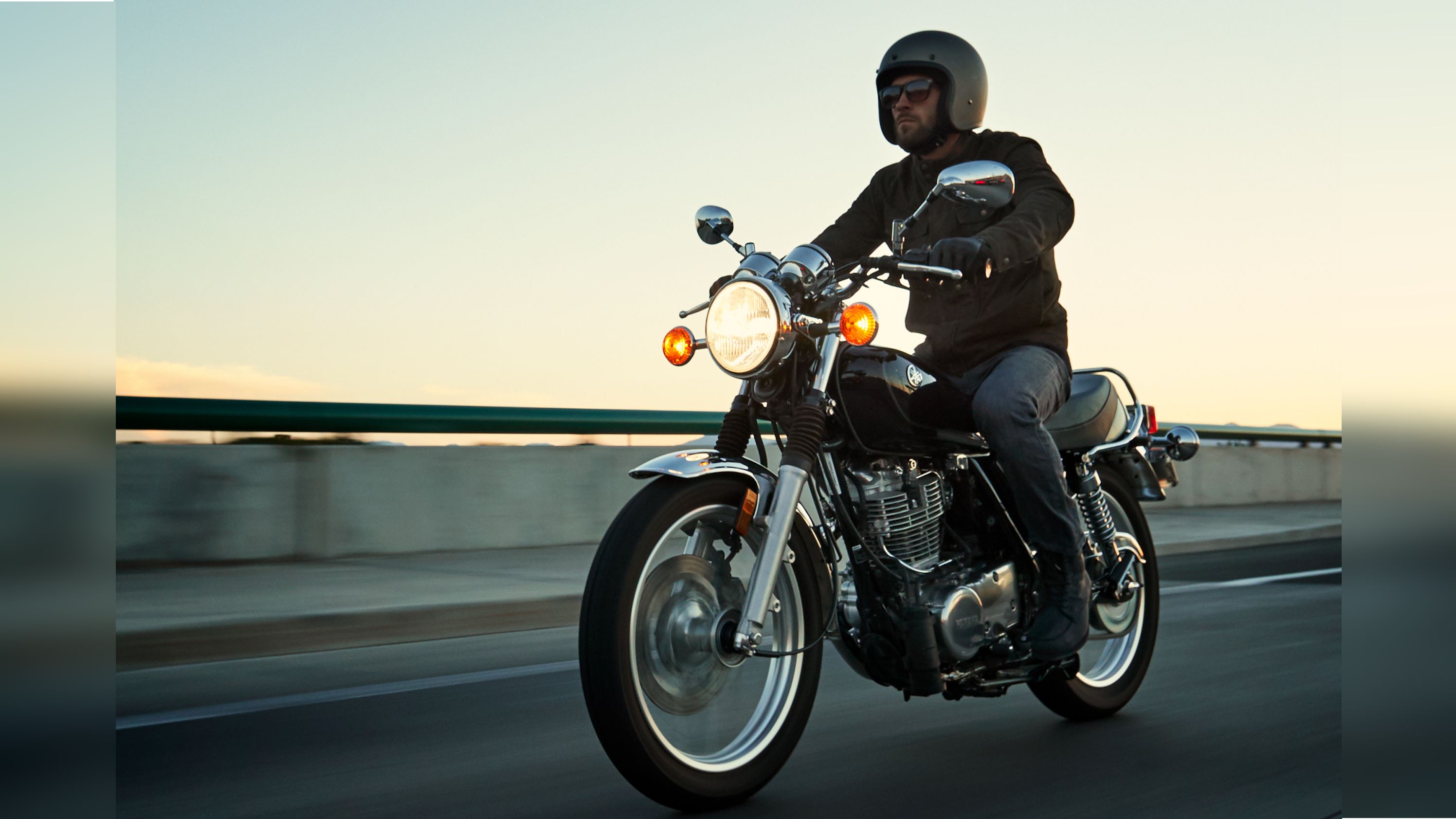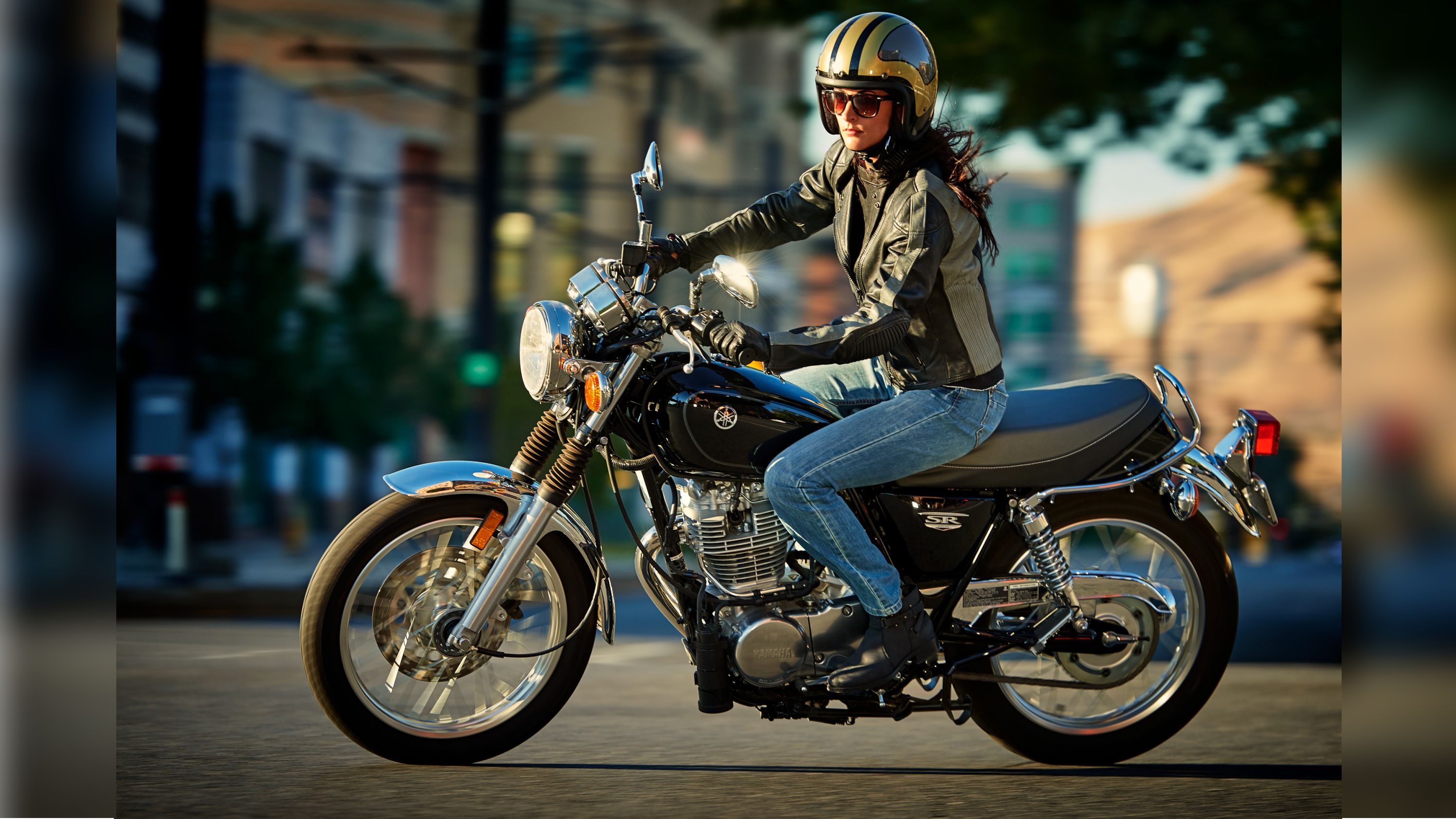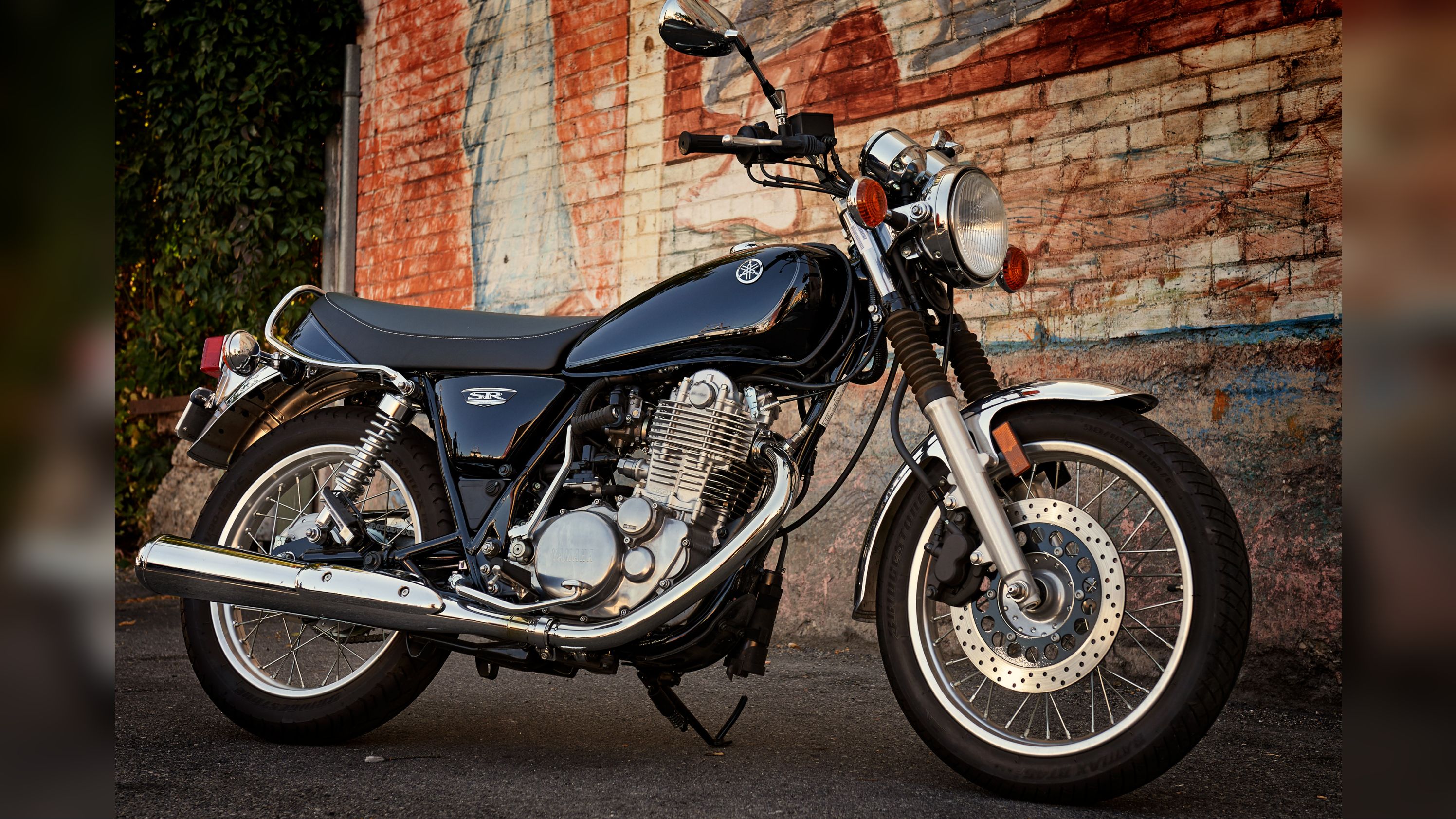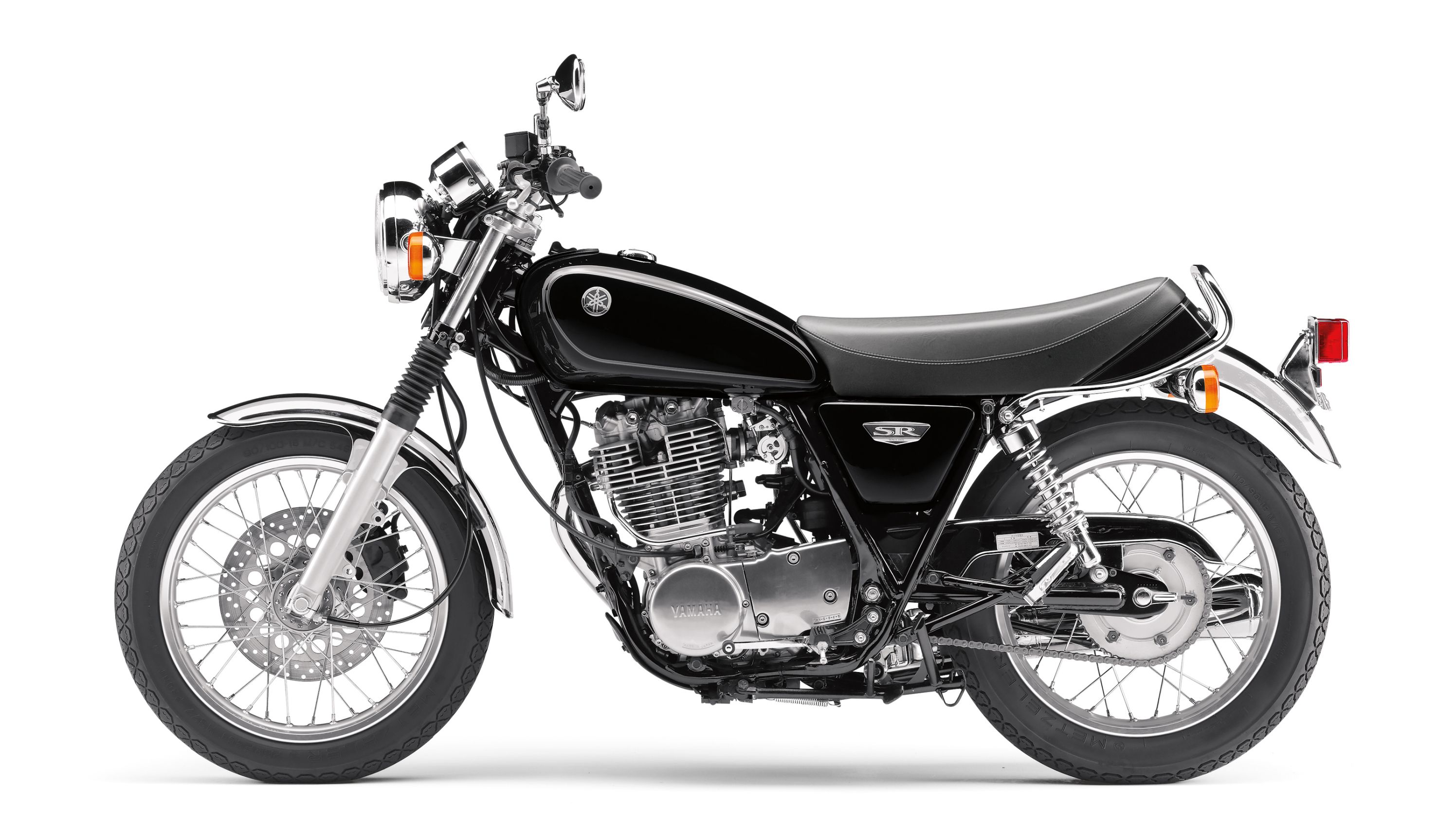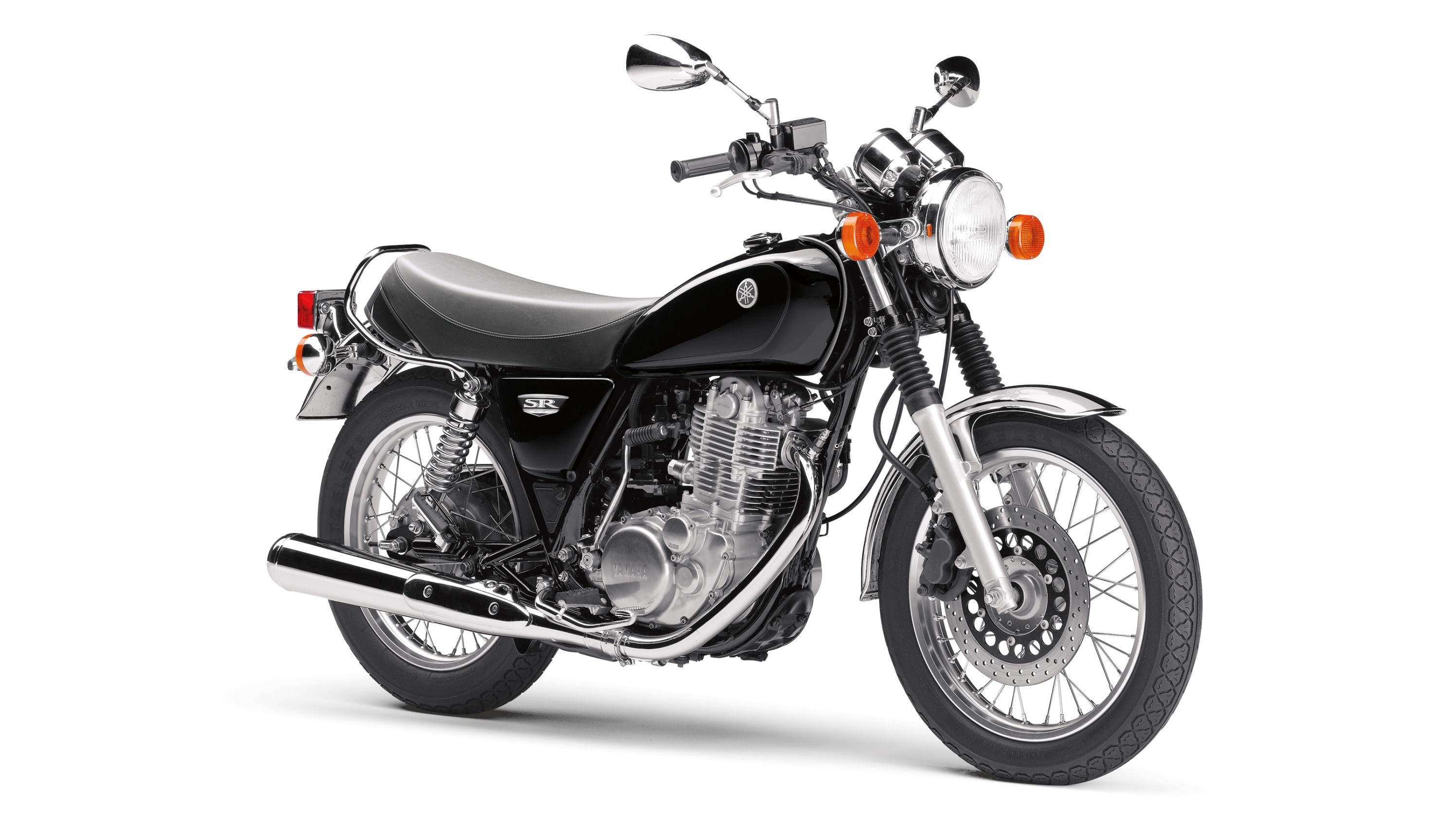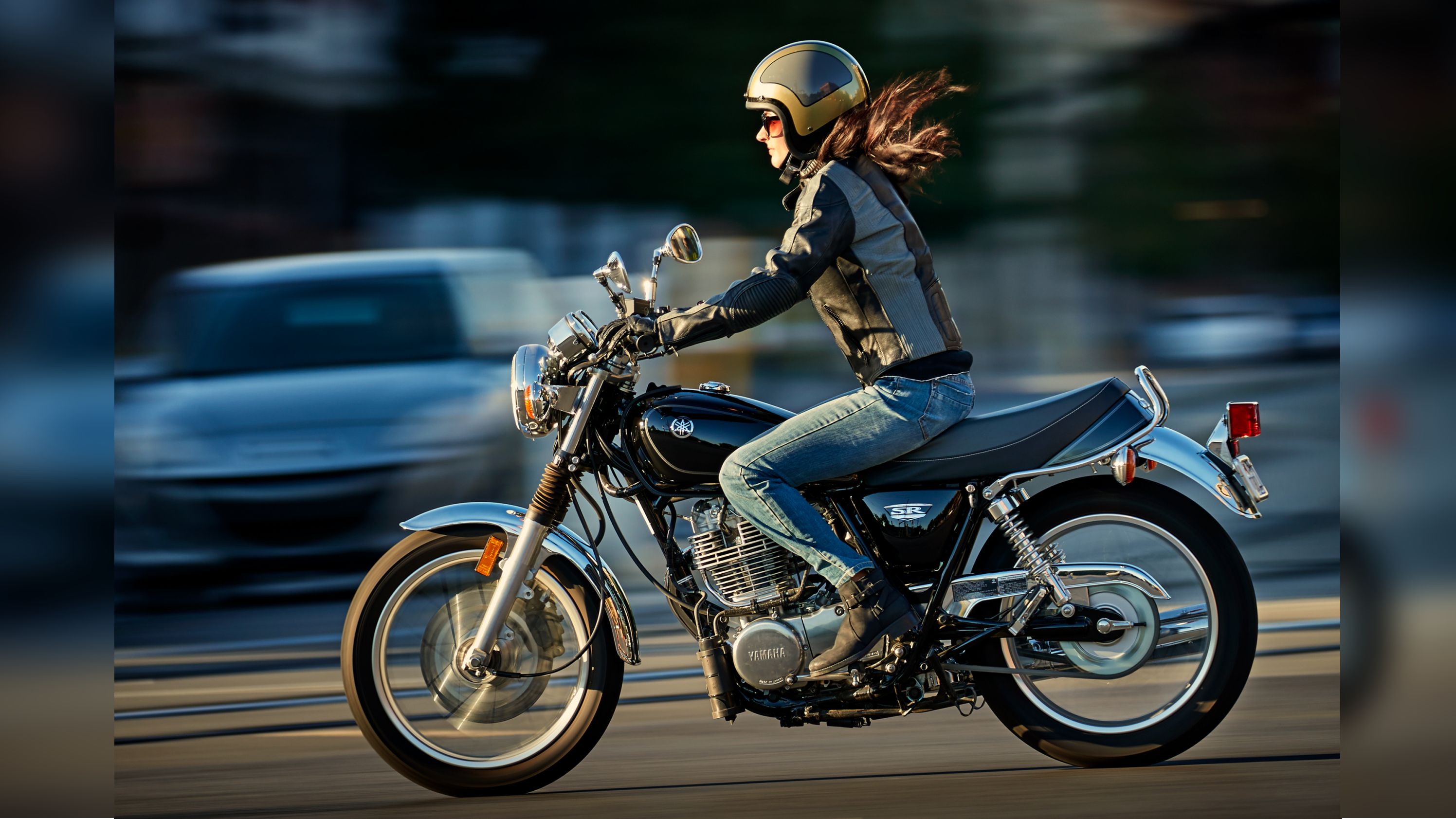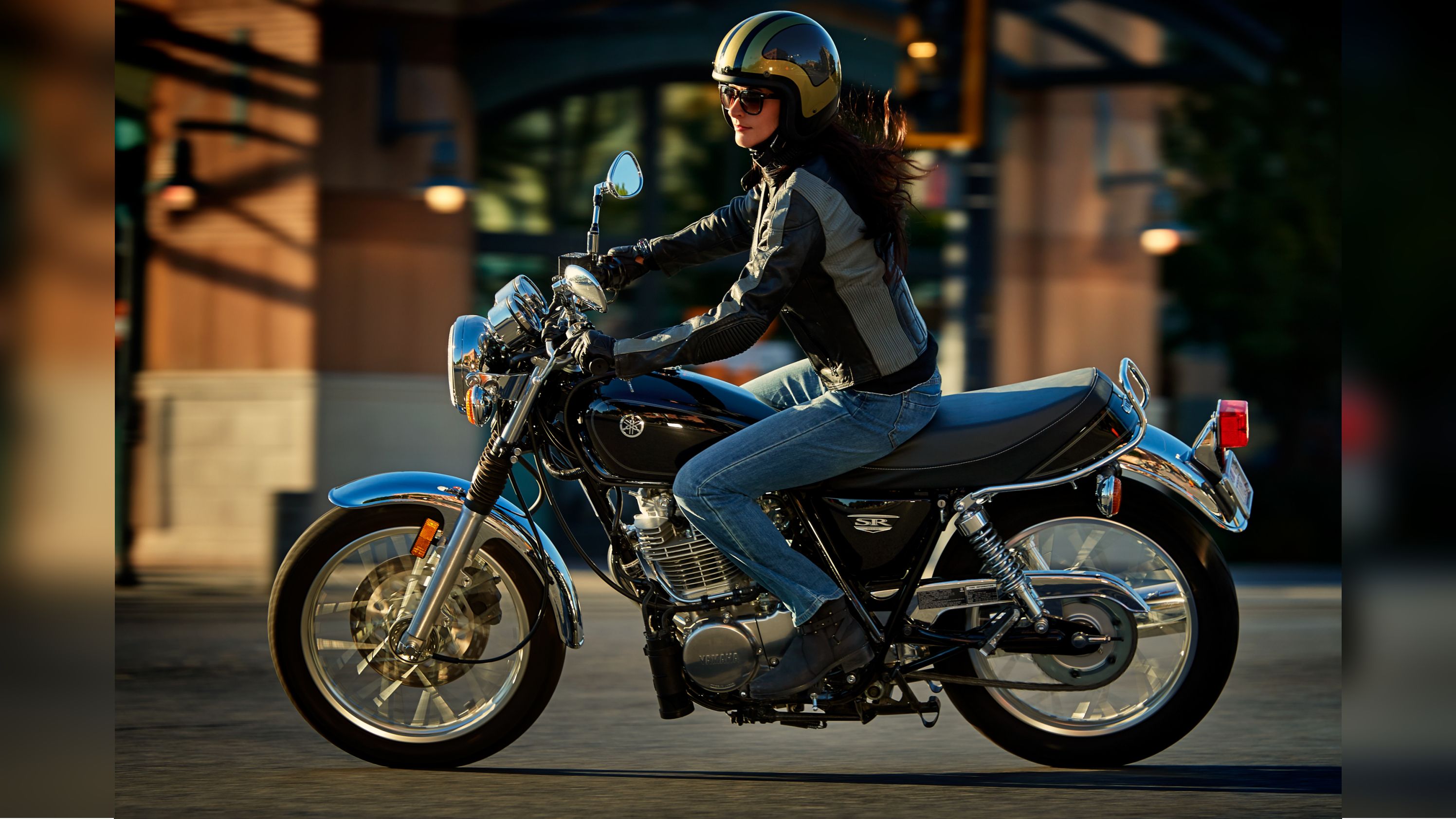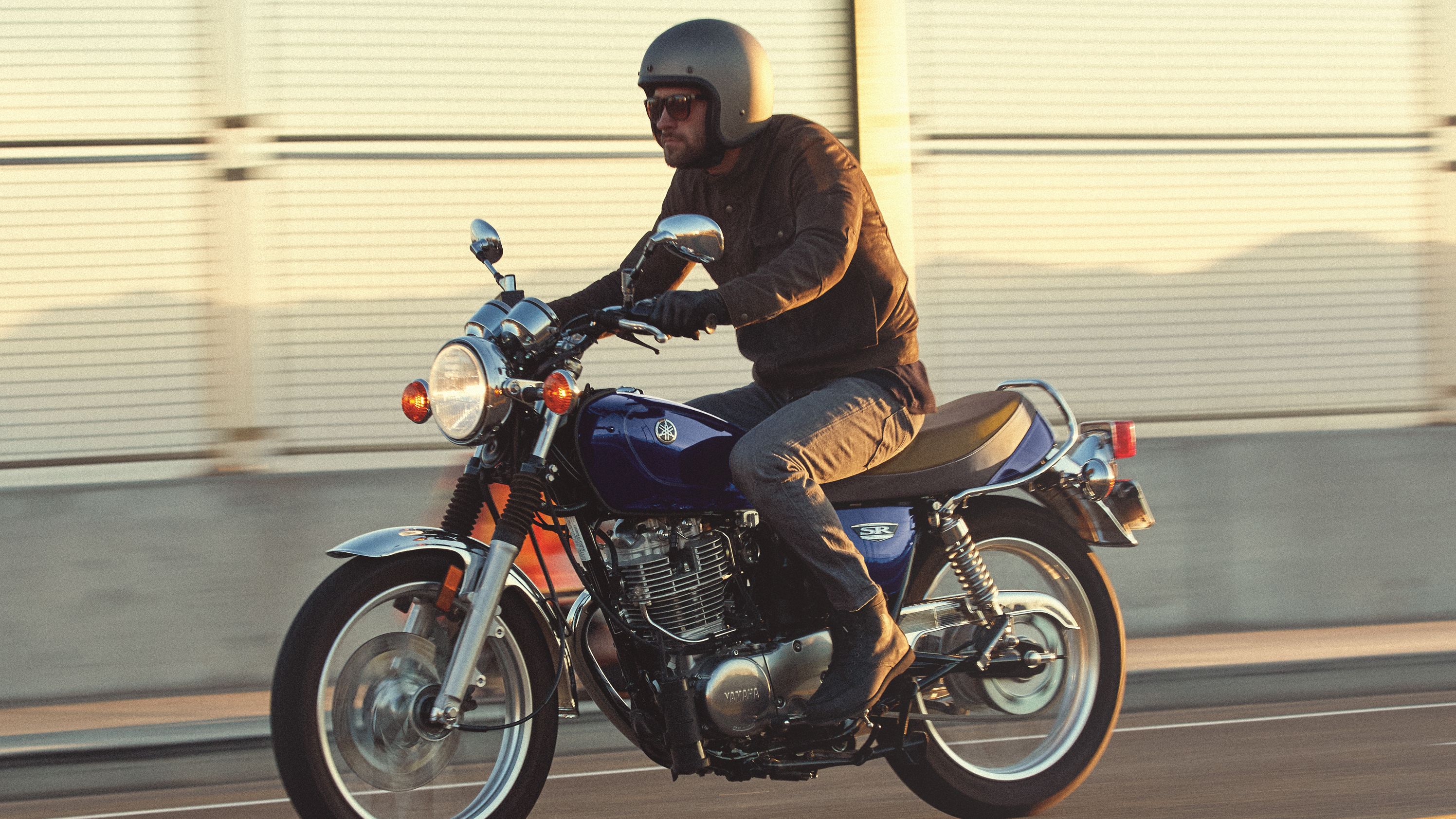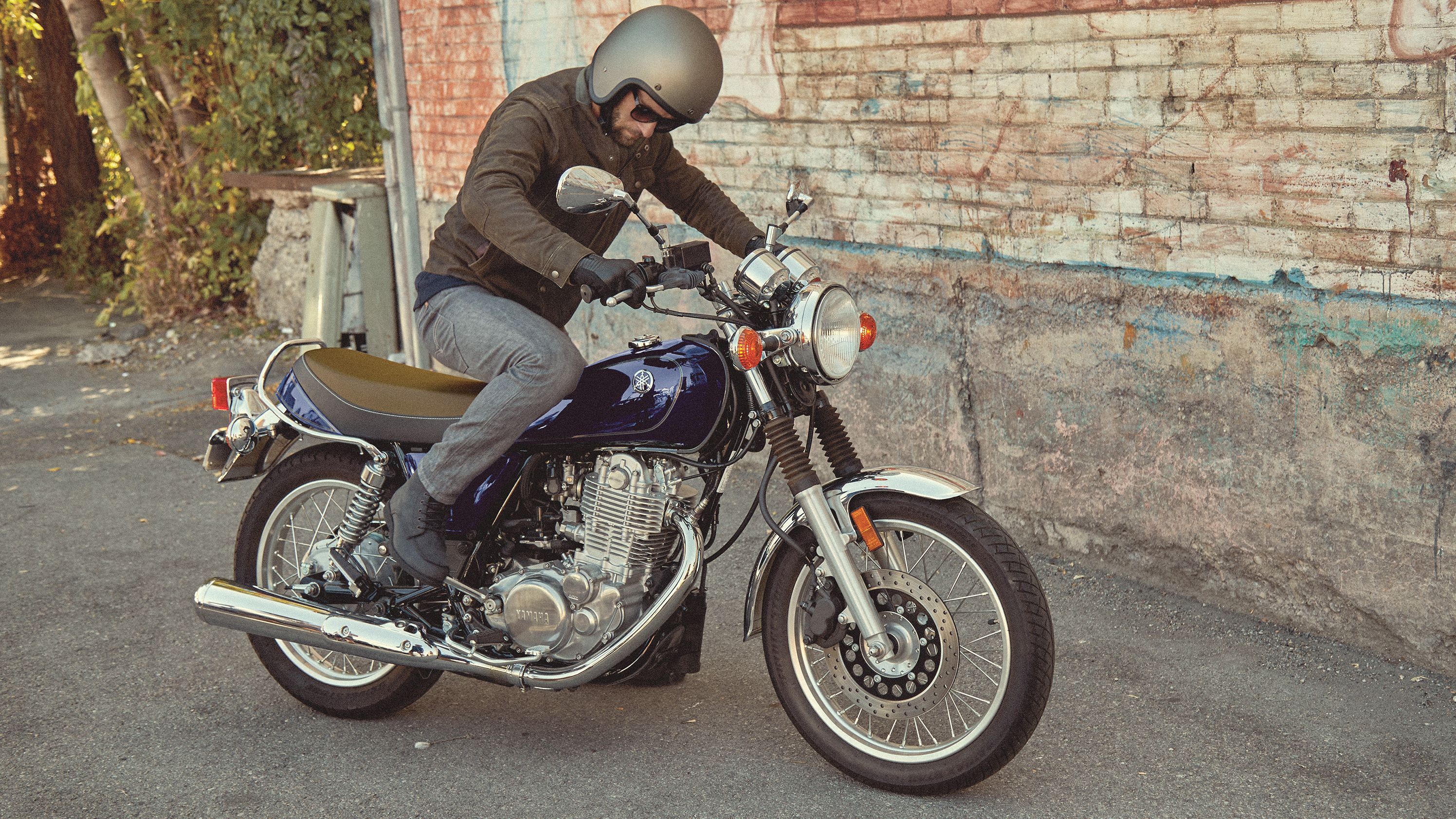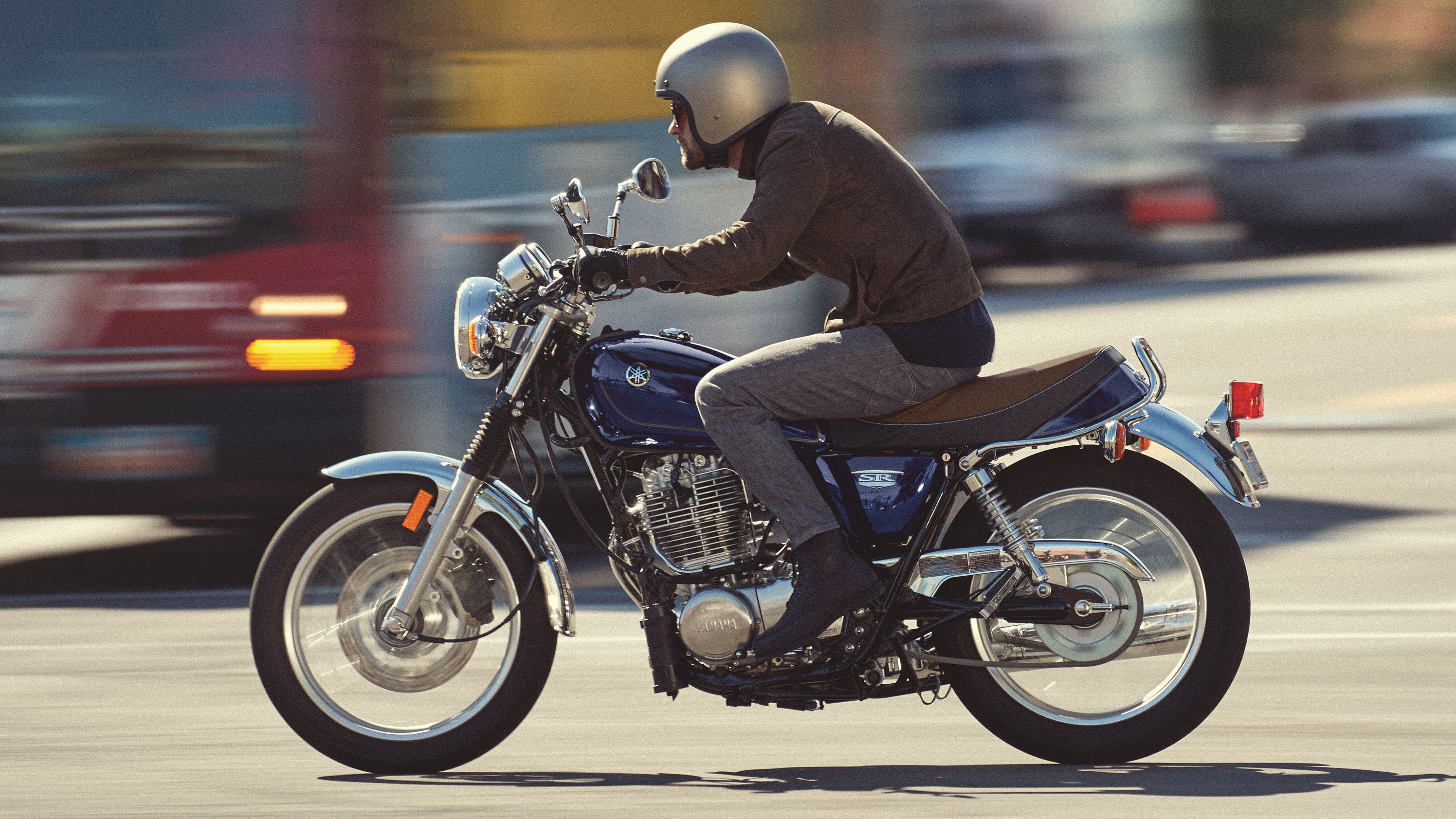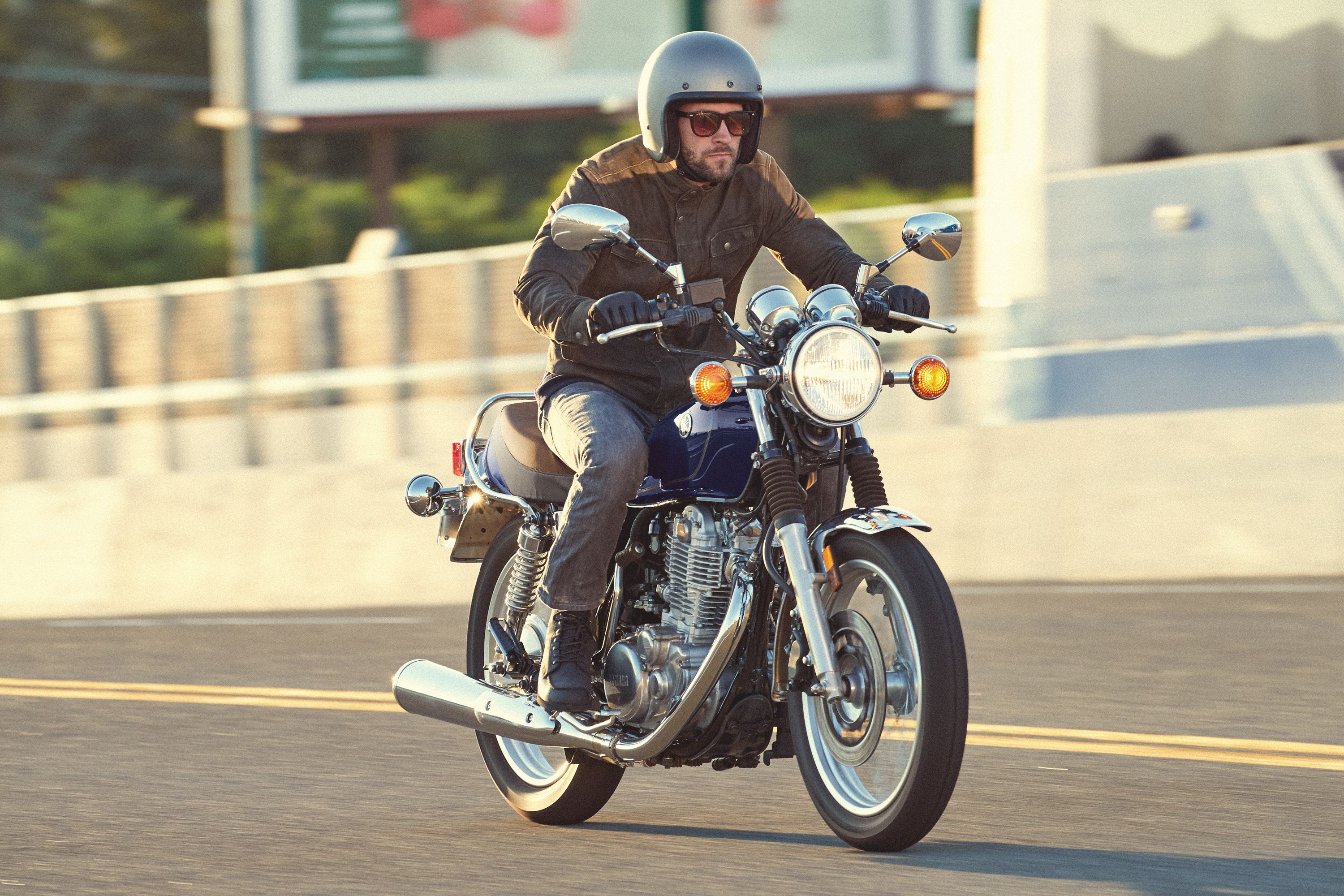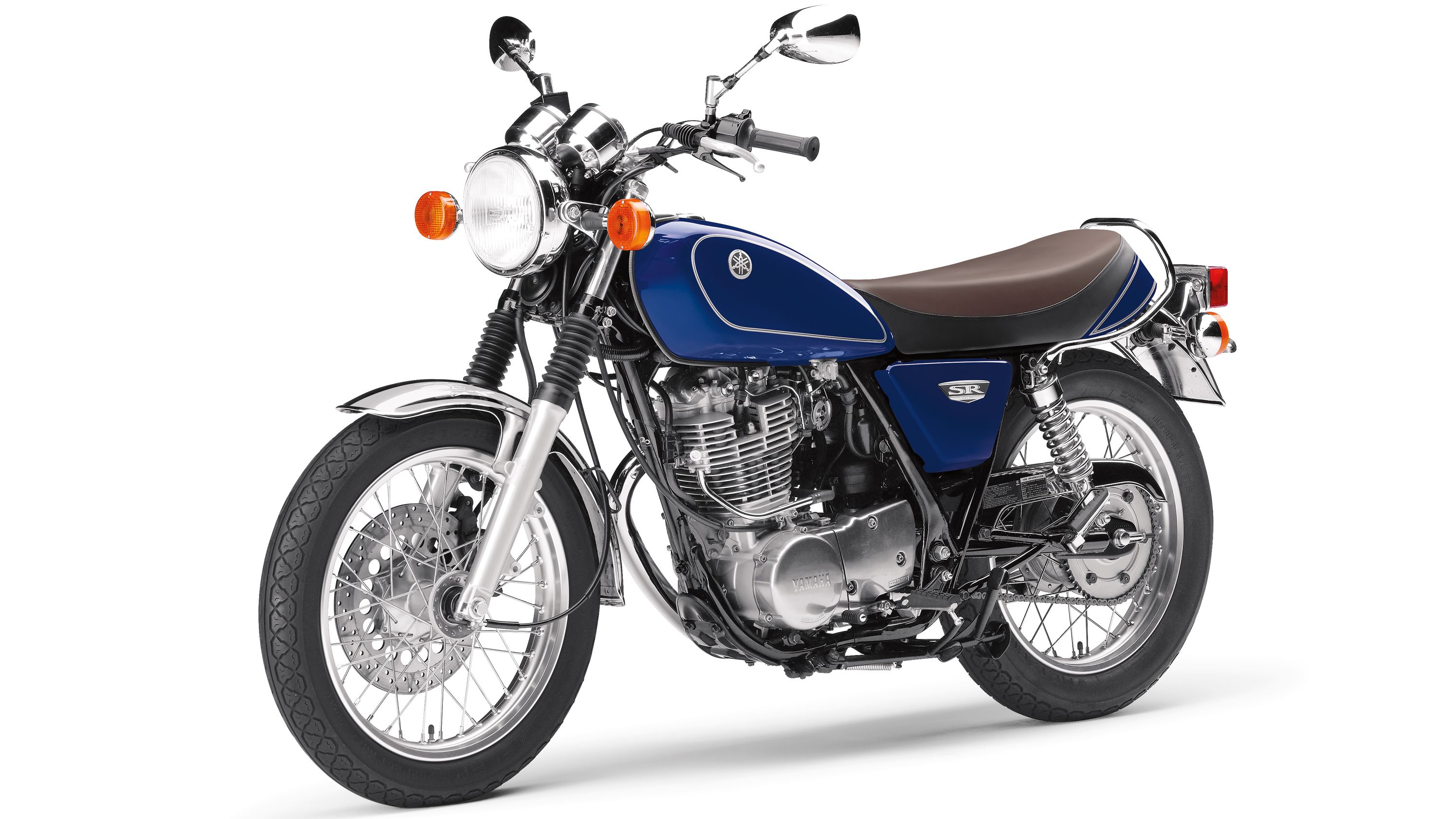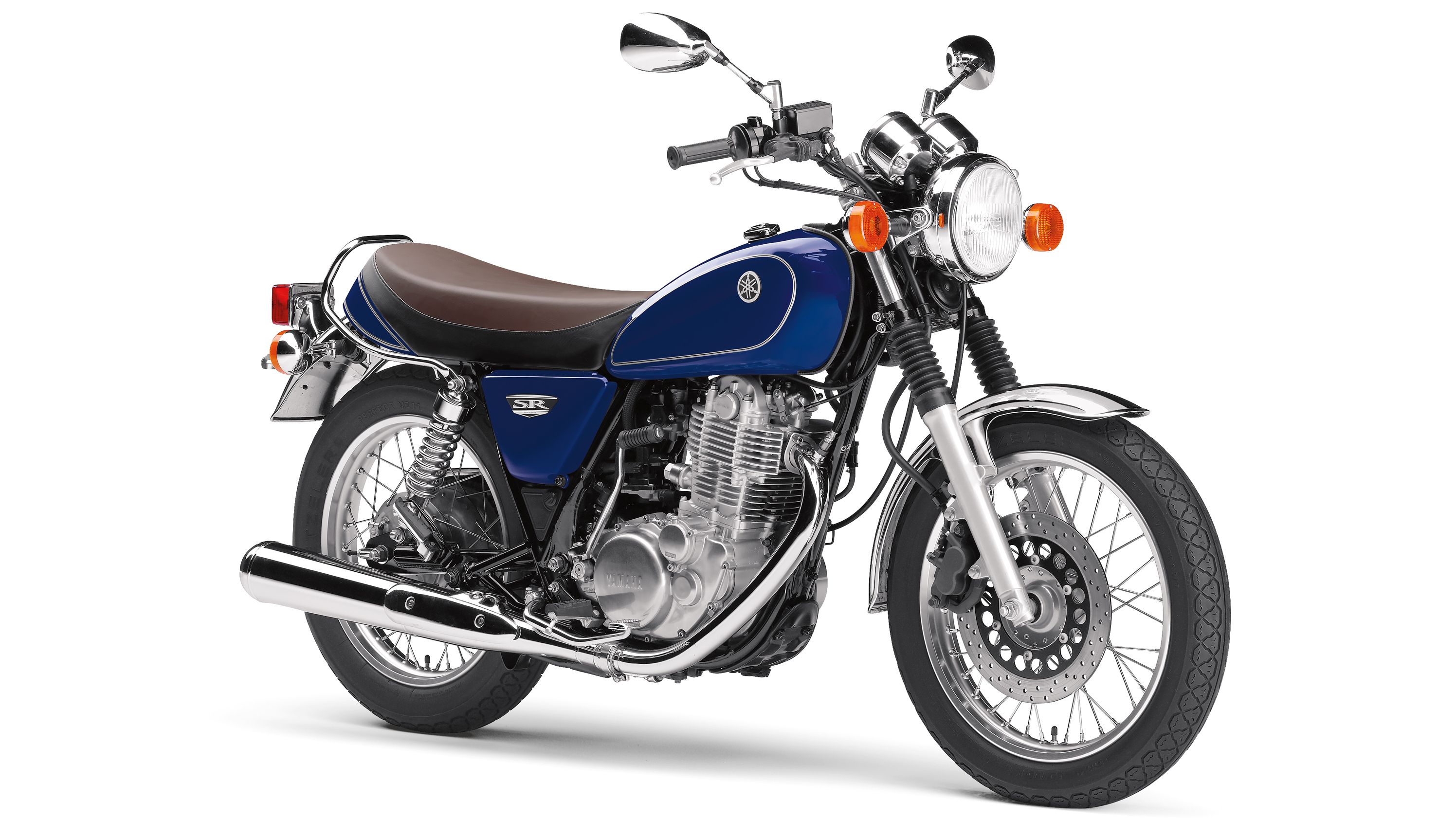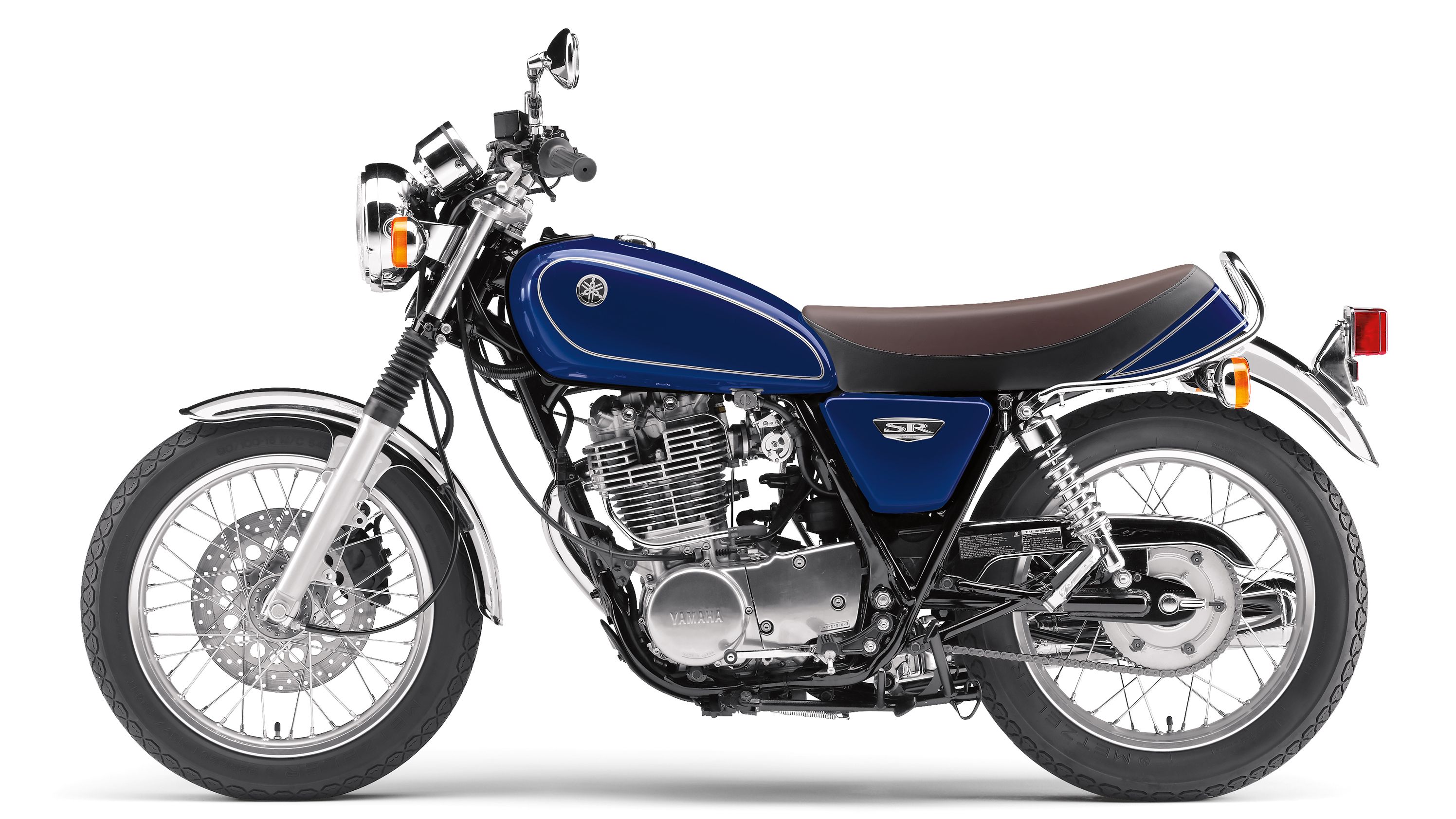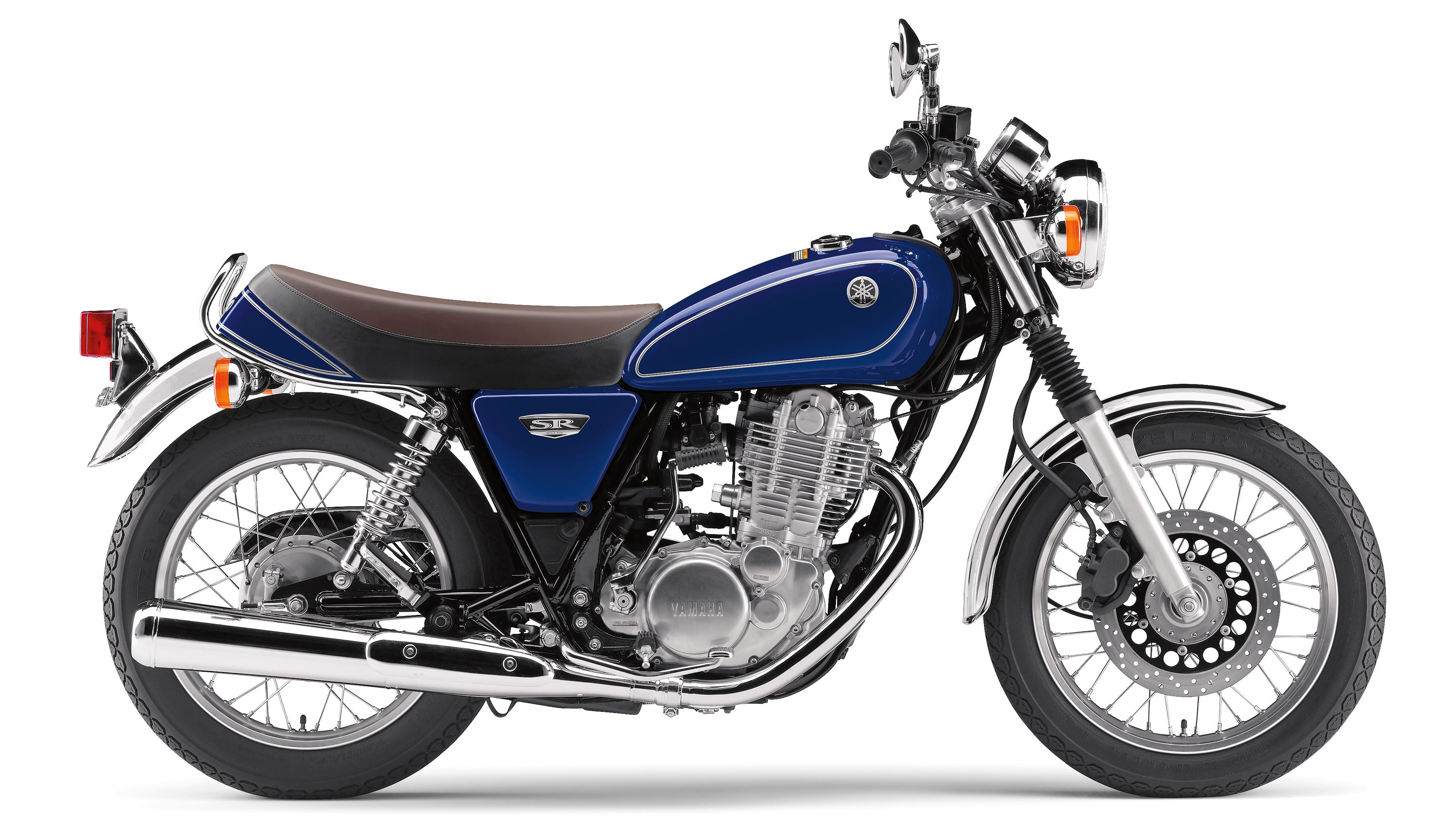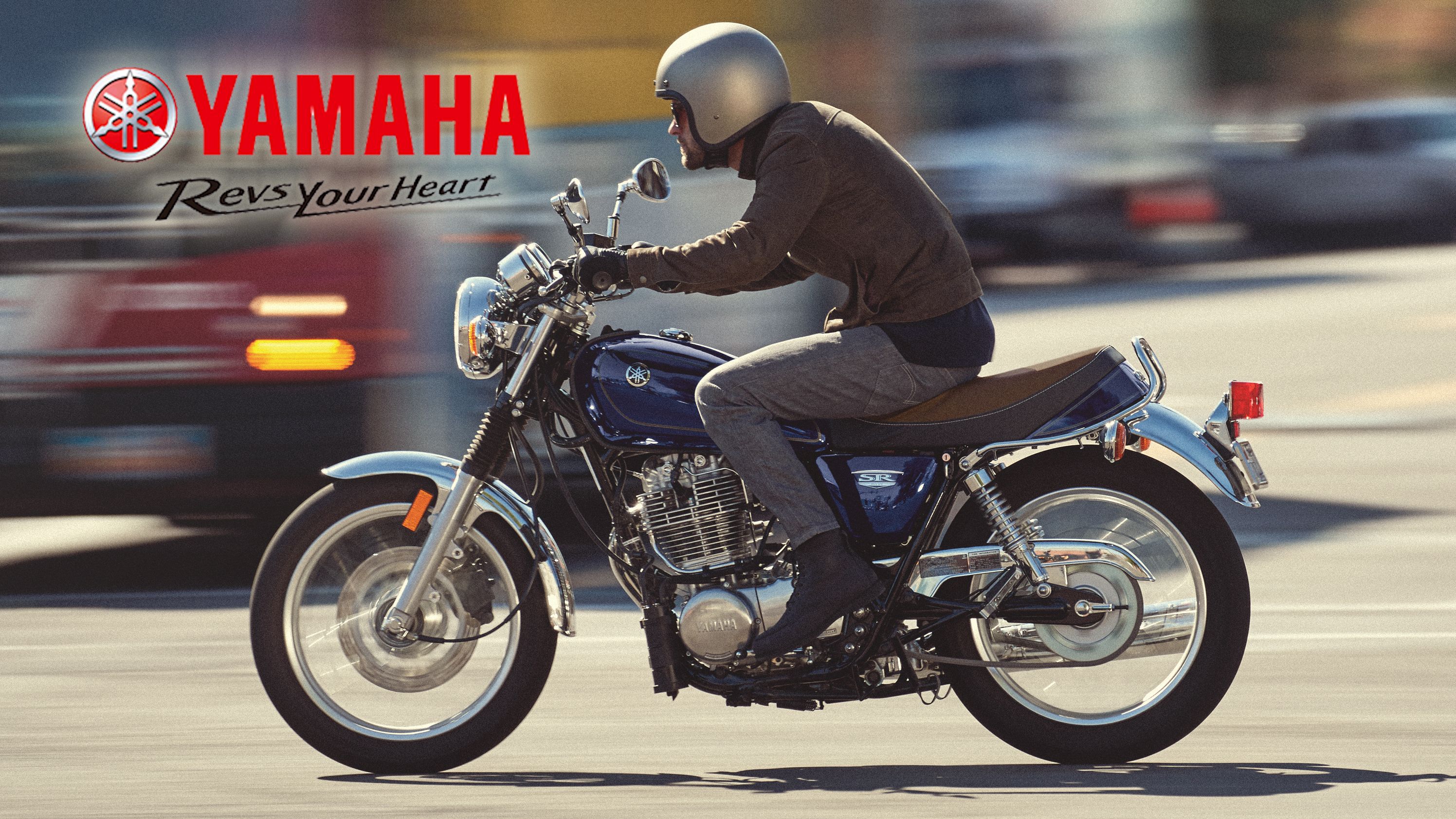Yamaha's motto for the SR400 is “everything old is new again," and nothing speaks more to that than a kickstarter and tubed tires. Re-introduced to the American market after a long absence, the SR400 still shows the remnants of the old British bike style it was originally meant to emulate in the 1970s. The SR400 is a meld of old and new bringing fuel injection and electronic ignition into the retro styling that's essentially unchanged since 1978. Easily customized into a café racer, bobber, or street tracker, the SR 400 is a blank canvas for you to make it yours. Excellent as a commuter or an entry-level bike, the SR400 is worth a look.
Continue reading for my review of the Yamaha SR 400.
2016 - 2018 Yamaha SR400
- Make: Array
- Model: 2016 - 2018 Yamaha SR400
- [do not use] Vehicle Model: Array
Design
I don't consider the seat height low at 31 inches, but the bike is narrow so unless you're really height-challenged, you'll still be able to find the ground. Compact and weighing in less than 400 pounds, you won't have a wrestling match on your hands trying to get it off the stand.
It's been a very long time since I had to kickstart a bike, but this isn't nearly as daunting a task as it was in yesteryear. No, the kickstarter isn't an option; it's the only way to start the SR400. Charming? Maybe. I haven't decided yet if I think that's awesome or a deal breaker. Unless you ride off-road bikes, you've probably never used a kickstarter -- at least those of you younger than I am, and that's probably most of you.
In the old days, it was quite a skill and you had to do it right, or you'd break your leg or it would throw you over the handlebars. The old high-compression XLCH could really give you a thrill, as I well recall. It was a balance of retarded timing, the choke setting, and having plenty of body mass to throw at the kicker pedal to get the bike going and God forbid you stall at a traffic light.
The SR400 doesn't have any of those problems. There's no choke to mess with so all that pre-fiddling no longer applies. There's a sight glass on the cam to aid in lining up the piston on the compression stroke. Once you get the piston lined up just after top-dead-center, give the kicker pedal a kick and it starts. Does it sound complicated? It really isn't. Once you do it the first time and know how the pedal "feels" when it's ready to start, you won't have to monkey with the sight glass again. Fuel injection solves the problem of stalling when idling, so you can look uber-cool kick starting the bike without any of the old problems associated with it.
Chassis
Yamaha starts out with a lightweight, single-downtube, double-cradle frame that sets the stage for the rest of this exercise in nostalgia. A flat backbone leaves us with the old-school banana seat that meets the tank hump in a gentle swale. This nearly-straight top line plays right into the classic style of the '70s, and the chrome passenger grab rail completes the look. The frame sets the steering-head angle at a modest 27.7 degrees, leaving us with a compact, 55.5-inch wheelbase and 4.4 inches of trail. Ground clearance is adequate at 5.1-inches high, and seat height is reasonable for most riders at 30.9-inches tall. The compact frame, though designed mainly for a certain look, provides agile handling and quick reversals far beyond what one would expect from such a mundane machine.
Hydraulic, telescopic forks support the front end with 5.9 inches of travel. The forks come fixed with no adjustable parameters – an acceptable feature given the light weight and dated look of the bike – and black bellow-gaiters protect the swept area of the fork tubes from road grit while reinforcing the retro style. A classic, yoke-style swingarm springs off the dual, external, coil-over shock absorbers that also come sans adjustment, which is a little disappointing simply because the little spring-preload bezel would not detract from the overall panache one bit.
A single hydraulic caliper and 298 mm brake disc binds the front wheel, and the factory took the retro-route and installed a 150 mm mechanical drum in back. Normally I would whine about that at this point, but given the light weight, and the fact that 70 percent of your stopping power comes from that juice-brake up front, I am OK with the retro drum brake in back. Face it; a rear disc just wouldn't look right on this ride.
All-around, 18-inch, tubed hoops round out the rolling chassis on laced, chrome rims – a classic touch that ties right into the chrome front and rear fenders and other bits and bobs for a certain continuity of design.
|
Frame: |
Semi-double cradle |
|
Suspension, Front: |
Telescopic fork; 5.9-inch travel |
|
Suspension, Rear: |
Dual shock swingarm; 4.1-inch travel |
|
Rake: |
27.7 degrees |
|
Trail: |
4.4 inches |
|
Brake, Front: |
Hydraulic single disc brake, 298 mm |
|
Brakes, Rear: |
150 mm drum |
|
Wheel, Front: |
Spoke, 18 x 1.85 |
|
Wheel, Rear: |
Spoke, 18 x 2.15 |
|
Tire, Front: |
90/100-18 |
|
Tires, Rear: |
110/90-18 |
Drivetrain
A 399 cc, “thumper” engine drives this classic ride. The vertical arrangement of the air-cooled jug toes the nostalgic line and accentuates the look, rather than detracting from it. Though the engine strives to revive the past – even going so far as to run with a kick-only starter – the innards are all modern with fuel-injection controlled induction and electronic ignition so you get the old looks with modern performance and emission control.
The engine cranks out a modest 24 ponies at 6,400 rpm, and 21 pound-feet of torque at the 5,500 rpm peak on an independent dyno. Surprisingly, the torque curve actually comes on rather early, producing the majority of max torque (20 pound-feet) at a mere 2,500 rpm. This grunty bottom-end provides for some decisive hole shots and authoritative roll-on response for navigating traffic. Mileage is up there at 66 mpg, which really isn't bad for basic transportation, and if you need better mileage than that, you may have to start looking at scooters instead of the “proper” motorcycle sector.
A five-speed transmission keeps the powerband in the usable range, and a good, old-fashioned, O-ring chain drive carries power to the rear wheel. So like the classics, you have the same look with the chain final drive, but without that black grease stripe up the left side of your back. If you ever rode an old bike without the chain guard, you know what I'm talking about.
|
Engine: |
air-cooled four-stroke single cylinder, SOHC; two valves |
|
Displacement: |
399 cc |
|
Bore: |
87.0 mm |
|
Stroke: |
62.7mm |
|
Compression Ratio: |
8.5:1 |
|
Fuel Delivery: |
Fuel Injection |
|
Starter: |
Kickstarter |
|
Ignition: |
TCI: Transistor Controlled Ignition |
|
Transmission: |
Five-speed; multi-plate wet clutch |
Pricing
MSRP on the 2018 SR 400 is $5,999 and comes with a one-year limited factory warranty. If you want the SR400 in black, Yamaha offered it in Onyx for 2016 and 2017. For 2018, get your SR400 in fetching Galaxy Blue.
|
Warranty: |
One Year Limited Factory Warranty |
|
Color: |
|
|
2016, 2017: |
Onyx |
|
2018: |
Galaxy Blue |
|
Price: |
|
|
2016: |
$5,990 |
|
2017, 2018: |
$5,999 |
Competitors
Since the SR400 is intended to hail back to a certain era in the U.S. market, I picked another bike meant to inspire memories of yesteryear; the cafe' racer-inspired Street 500 from Harley-Davidson. While the Street certainly achieves a certain amount of nostalgia, it mainly just suggests at the old design features, and it doesn't go quite as far as the kickstart-only SR400 in that category. Sorry Harley, the big radiator really detracts from the efforts to date the Street.
The Street comes with a 491.6 cc engine, a little bigger than the SR400's 399 cc mill, and both benefit from fuel injection and electronic ignition. As expected, Harley wins out in the torque department with 29.5 pound-feet at 3,500 rpm, but the displacement differential explains away the torque offset, and so the mills are roughly equal pound for pound, and inch for inch.
Transmission design sees another difference between the two. While the Yamaha comes with a fairly-standard five-speed gearbox, Harley sprung for a sixth gear to help the Street stay firmly within its powerband and keep highway rpm in the reasonable range.
Both bikes really only qualify as basic -- even entry-level -- transportation. However, don't think of that as a negative. They both serve as a blank canvas for aspiring custom bike modders out there, and leave plenty of room for personal expression.
While it's still impressive that Harley puts out a bike for under seven grand -- $6,849, to be precise -- the SR400 comes in even less at $5,999. You'll have to decide for yourself whether the extra 900 bucks is worth it.
He Said
My husband and fellow writer, TJ Hinton, says, “This is a real gem. When I was a very young man in the '70s, this is what I though all non-Harley street bikes looked like, so it takes me right on back to “the days.” I have to give Yamaha props for committing to the target look, even to the point of going with a kick-only starter, rather than just suggesting a certain look with lick-'em-stick-'em hang-on equipment or superficial features. I have always held that re-released classics would do well in the current market, so I am most curious to see how well the SR400 is received.”
She Said
"If you feel like the Bolt from Yamaha's Star cruise line is a little too much for you to chew with its 942 cc engine, then the SR400 is worth a look. They're both classically styled entry-level bikes that also make zippy commuter bikes. On the flip-side, if you like the SR400 or the Street 500, but want a little more oomph, the Bolt may be your ticket."
Specifications
|Engine & Drivetrain:||
|
Engine: |
air-cooled four-stroke single cylinder, SOHC; two valves |
|
Displacement: |
399 cc |
|
Bore: |
87.0 mm |
|
Stroke: |
62.7mm |
|
Compression Ratio: |
8.5:1 |
|
Fuel Delivery: |
Fuel Injection |
|
Starter: |
Kickstarter |
|
Ignition: |
TCI: Transistor Controlled Ignition |
|
Transmission: |
Five-speed; multi-plate wet clutch |
|Engine:|O-ring chain|
|Displacement:||
|
Frame: |
Semi-double cradle |
|
Suspension, Front: |
Telescopic fork; 5.9-inch travel |
|
Suspension, Rear: |
Dual shock swingarm; 4.1-inch travel |
|
Rake: |
27.7 degrees |
|
Trail: |
4.4 inches |
|
Brake, Front: |
Hydraulic single disc brake, 298 mm |
|
Brakes, Rear: |
150 mm drum |
|
Wheel, Front: |
Spoke, 18 x 1.85 |
|
Wheel, Rear: |
Spoke, 18 x 2.15 |
|
Tire, Front: |
90/100-18 |
|
Tires, Rear: |
110/90-18 |
|Bore:||
|Stroke:|82.1 inches|
|Compression Ratio:|29.5 inches|
|Fuel Delivery:|43.1 inches|
|Starter:|30.9 inches|
|Ignition:|55.5 inches|
|Transmission:|5.1 inches|
|Final Drive:|94.5 inches|
|Chassis:|3.2 gallons|
|Frame:|0.58 Gallon|
|Suspension, Front:|Regular Unleaded|
|Suspension, Rear:|66 mpg|
|Rake:|384 Pounds|
|Trail:|331 Pounds|
|Brake, Front:||
|
Warranty: |
One Year Limited Factory Warranty |
|
Color: |
|
|
2016, 2017: |
Onyx |
|
2018: |
Galaxy Blue |
|
Price: |
|
|
2016: |
$5,990 |
|
2017, 2018: |
$5,999 |
References
See our review of the Harley-Davidson Street 500.


